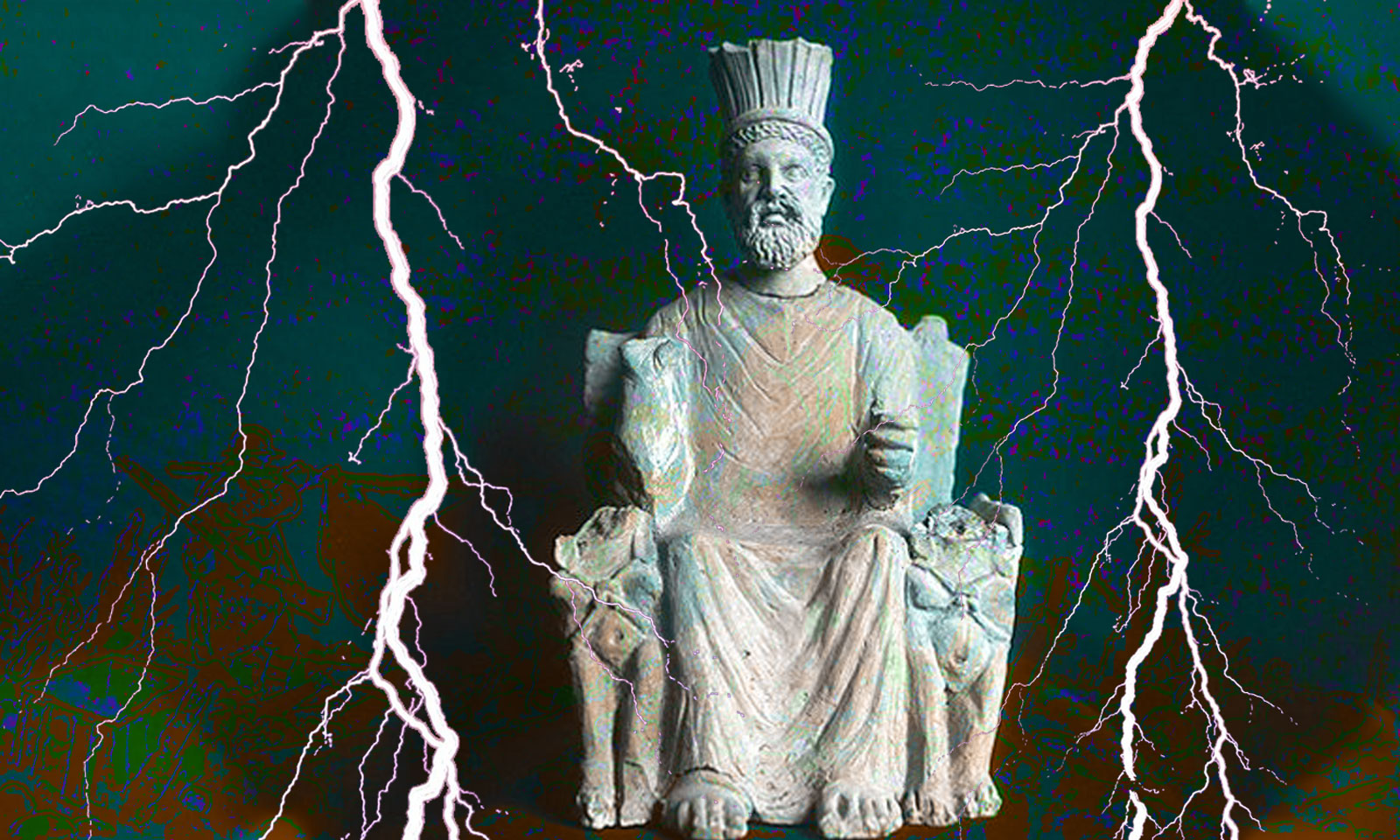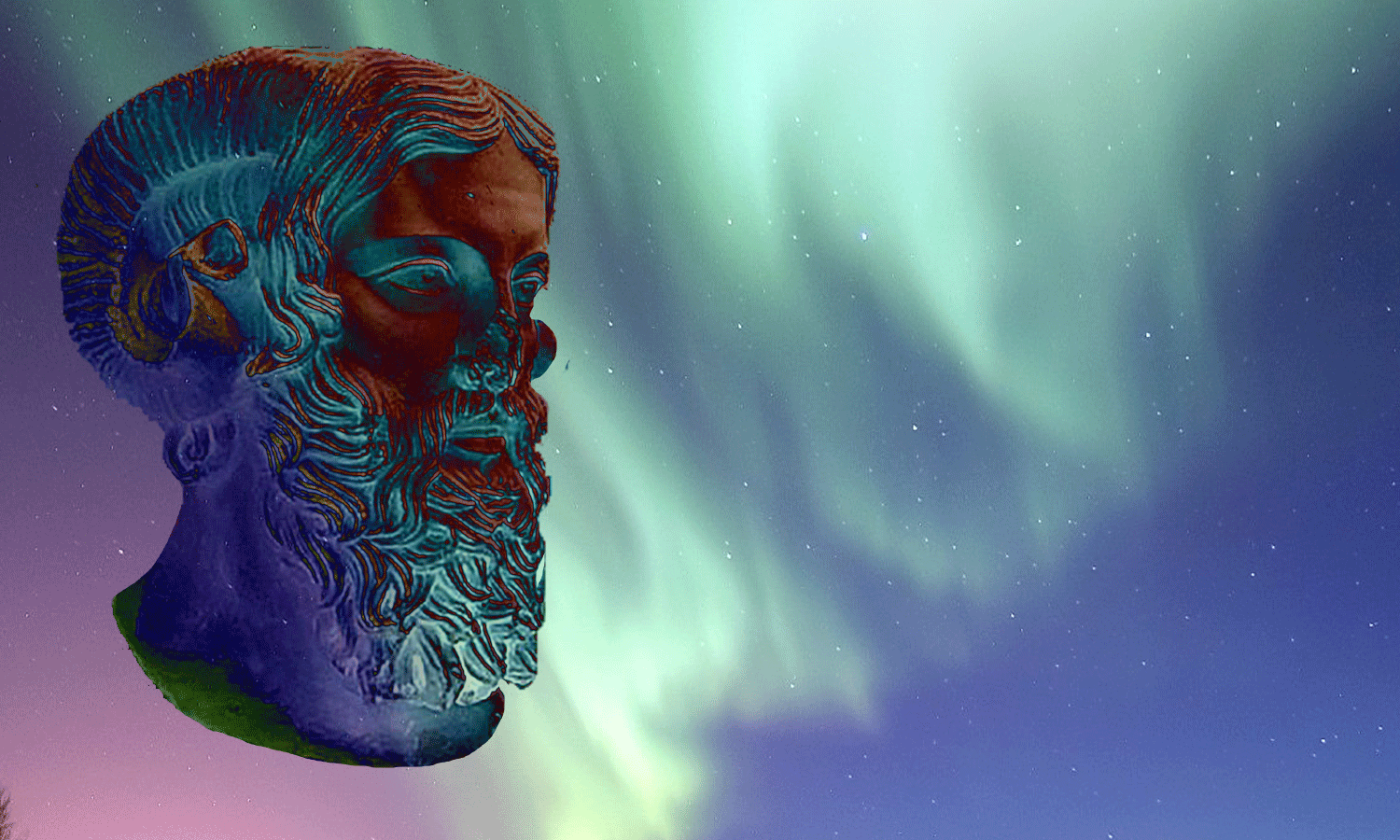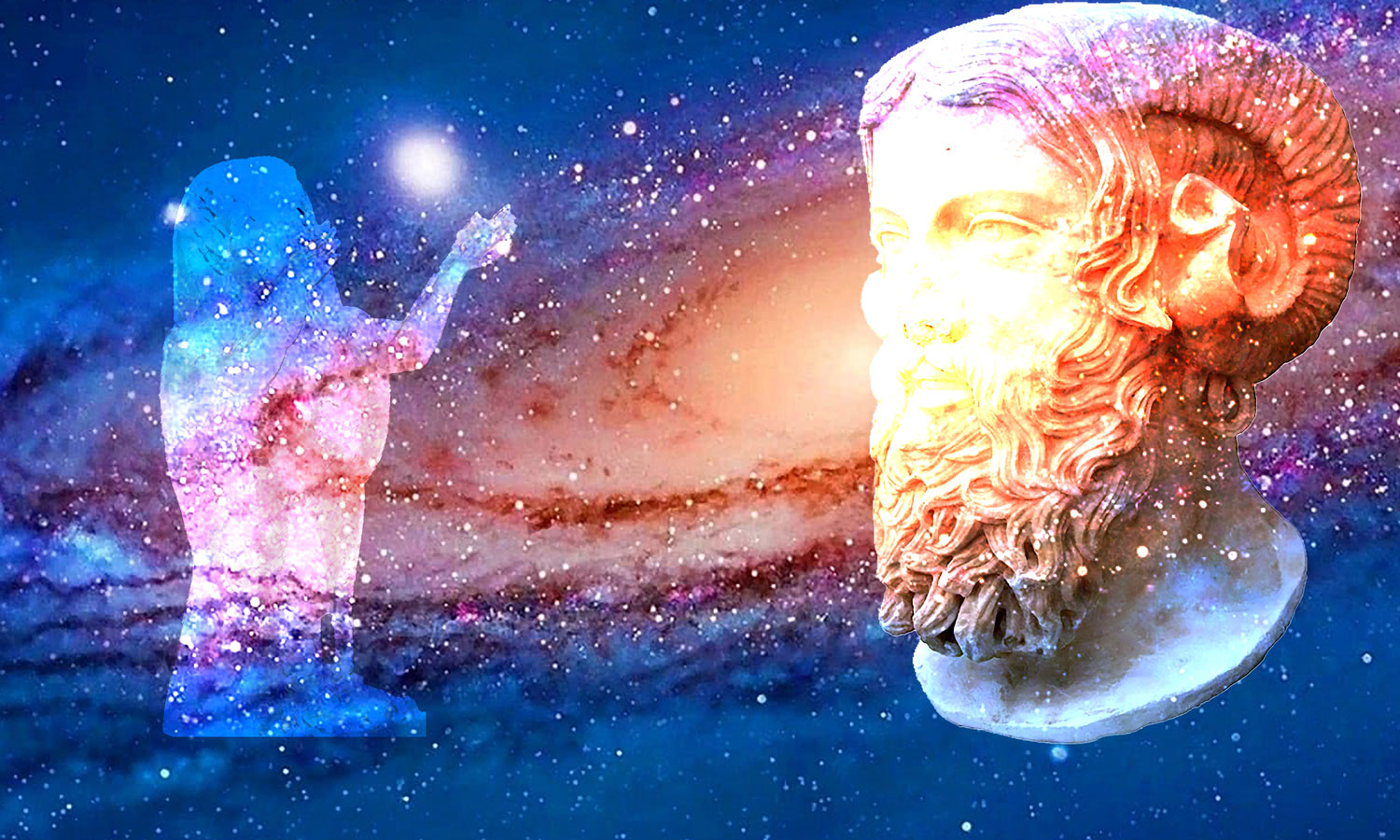
Baal? But who is Baal, you ask. If you ask a competent specialist, he will tell you that Baal was a Semitic god. Semitic? No. Bel the Aries is Belinos, a Gaulish god. And Belinos is the Aries of Hyperborea — Rama himself. Or one of his relatives. For many gods were called Baal, which is both a god’s name and a generic title.
Baal or Ba’al (Hebrew: ב ע ל, Báʿal, which means superior, supreme, Arabic: بعل, Ba’al, akkadian: Bēl), is a Semitic, Canaanite and then Phoenician god. Under the Ramses dynasties, it is assimilated in Egyptian mythology to Seth and Montou. (source)
In the version of the Canaanite pantheon, Baal is the son of the king of the gods El, and of the goddess of the sea Asherah. He was for the Canaanites the god of the sun and the storm and the god of fertility. Son of El, which means heir to the Almighty Lord who originally reigned on the planet Terra. El –and his Elohim– isare? the chief commander of terraformers from distant stars.
Golden Calf
According to the Book of Hosea and other biblical books, the cult of the golden calf is held in Baal. If the Bible calls him “calf,” it’s a mockery. The Hebrews did not see the placid and somewhat languorous animal that we imagine according to Psalm 106: they exchanged their glory for the image of the grass-eating ox (Ps106, 20), or according to Jeremiah: They are not even gods! And my people have exchanged His Glory for Helplessness” (Jer 2:11); but a young bull, quivering and asking only to beget, as we can see in Psalm 29: “He makes Lebanon leap like a calf” (Ps 29:6) or in Jeremiah: “You have corrected me, I have been corrected, like an untrained young bull” (Jer 31:18). (source)
Christian exegetes and other Bible scholars maintain that Baal has no precise identity. Baal is not a divine person, but a divine title. In the Bible, he gathers together all the divinities that could divert God’s people from the right path. Therefore, in the Book of Judges, each story begins with: “The people of God turned away from the Lord and worshipped the Baals and the Astartes.”
In the same way, «Astartes» gathers the deities referring to Ishtar, the goddess of Babylon. Paradoxically, some biblical passages ascribe to God “Baal” specificities: like Baal, God dwells on a mountain, brings rain, fertility and crops, or is described as a “cloud-rider” (source).
Gold is Old
Astarte is above all the protective goddess of Tartessos, as Athena is that of Athens. Baal had shrines on every hill, called high places. Inside were icons and statues of Baal, and outside the stone columns (probably phallic symbols of Baal), sacred posts that represented Ishtar, and incense altars. This cult was also associated with certain celestial bodies (sun, stars). (source)
And here’s why. Sun was the name given to the Hyperborean mother ship, as big as the planet Venus, and shining night and day so close to Earth that humans could not look up at the northern sky.
The stars, and especially those of the constellation of the Great Bear Ursa Major, are the celestial origin of the former gods.
The Bull and the Ram
The bull or the calf are for Baal. What about the ram? Is it for Rama, the god made man, or for Rama, the biblical city of ancient Israel? “Cries were heard at Rama, tears and great lamentations: Rachel cries for her children, and did not want to be consoled, because they are no more” (Book of Jeremiah, verse 31:14).
There are too many coincidences around the name of Rama. Especially for me who does not believe in chance. That is why I tell myself that if the scribbling angels of Marshal Yahweh did everything to erase this cursed name, Lord Rama or Rama Baal in many places escaped their vigilance. This shows that angels can be mistaken. Or that they happen to be distracted. Or they’re suffering from acute laziness.
In short, like their boss, angels are not infallible. It makes them more human all at once. And it reminds you that it is useless or even dangerous to summon these guys. Or summon anyone, for fear of bringing in someone who would have gone well.
The horny gods of the first divine wave have become the devils and demons of the following religions. It is always so. It is nevertheless curious to find in the Bible references to all these gods, whereas the Book of Books is supposed to plead strictly in favour of a single god. And a good god into the bargain. Where did the Hebrews see this play? In Egypt, during their captivity? Or in Babylon?

Biblical Patchwork
I’m leaning towards the Egypt of Akhenaten, Tuthmosis and Ramses. Because in Egypt –a country dedicated to metaphysical introspection– we find the first attempts to impose the vision of a single god. And not in Babylon, all imbued with the Sumerian teachings where the former gods number in dozens. Certainly in the Egyptian pantheon gods are even more. Their large number –too large?– has led some pharaohs to invent the one god. To make a change, yes, but also to induce the idea that the pharaoh, ie religious chief, must be worshipped by his people as the unique god on earth.
But from the Hebrew point of view, all these unique gods suck. Seriousness is lacking. One says shit, they could have read themselves again! Well yes. This is the story. The Bible is a composite sum of all that the Hebrews have been able to collect in fact from sacred texts. Some belong to long-forgotten civilizations. Many tell the same story by attributing it to different heroes. Most of these texts were relocated to Palestine/Israel, and lent to good Hebrews.
It’s the art of recycling applied to religion. Something that works, why give it up? It is better to use it again, even if it means attributing it to a biblical hero above all suspicion. So it was with the god Baal, who remains a model of the genre.
Baal Zeus
Baal refers to the universal god of fertility, Prince-Lord of the Earth, and also that of Lord of Rain and Dew. In the Ugandan language and in Old Testament Hebrew, Baal was referred to as the storm god under the title “He who straddles the clouds”. In Phoenician, he was called Baal Shamen (in Aramaic, Baal Shamin), god of Heaven. (source)
This is the right description of the former gods, first generation. In this Baal, god of lightning, we can recognize the Cyclops, Zeus, Ramman, Perun, Tlaloc and many others around the world.
And as the god of rain and fertility, Lord Baal has many divine competitors in all latitudes. To this, two explanations. The terraformers who came from the Great Bear to set up Terra had the mastery of lightning which they used in a triple use.
Lightning means rain. Rain and lightning nitrates are major fertilizer agents, hence thunder and fertility in their attributions.
Baalbek
But Baal was not exclusively a god of fertility. He was also the King of the Gods, a role in which he was depicted wresting divine power from Yamm, the god of the sea. The myths also speak of the fight he fought to obtain a palace as splendid as those of the other gods: he persuaded El, the supreme god of the pantheon, so that he would allow the construction of a palace; the god of arts and techniques, Kothar, for Baal, undertakes the construction of the most beautiful of the buildings, covering an area of 4,000 hectares. (source)

In my opinion, it is the temple of Baalbek, which today is called the Temple of Jupiter, because the Romans who rebuilt it baptized it in this way. Jupiter? Isn’t that Zeus? Baal and Zeus are one. By betraying Zeus Baal –or Rama Baal, it is the same– Marshal Yahweh put an end to the first divine dynasty that our humanity knew. This present-day humanity, the fifth, which suffers today under the yoke of a bolt of war, possessing the nuclear weapon, and very capable of setting Terra on fire if it is its interests.
“I have come not to bring peace but to bring war. I have set fire to the world, and I will stir it to flames”
The Eternal is dead
The Semitic term baal meant “possessor” or “lord”, although it could be used more generally; for example, a wing baal was a winged creature, and in the plural, baalim arrows meant archers.
There is not only one Baal, there were many. Think, there were millions aboard Hyperborea. Every corner of the world had its own, all of which had the same functions, the same responsibilities, the same processes. This should prompt us to welcome the successors of the Baals with the utmost caution. The gods before are not gods, and those after are impostors. They have the power of weapons like Yahweh, but they do not belong to the first terraformers, the only legitimate ones.
Both are not gods in the present sense, just supermen who live long… until they die. I recounted the death of Zeus, and the reign of his successors. So it is with all the religions that have stumbled over the prayer carpet. It is so good and so comforting to blindly pray to a god who listens to us. Even if he rarely answers…
Them On High
“When it had seemed good to Them on High, against all justice, to overthrow the Asian Empire and the nation of Priam, and the beautiful Ilion had fallen, and all that had been Troy built by Neptune was but a smoldering ground, the signs given us by the gods led us to seek distant exiles in a deserted world,” writes Virgil in Book III of the Aeneid. See how he calls the gods. No respect but fear of their power. Nor is there any illusion about their fairness: they act according to their will, against all justice. Whether we are governed by one or the other, the result will be the same. Everything for them, and our eyes to cry.
I chose to name them the former gods, to show their difference with the word God as it is used nowadays, which would be better the Source. Everything comes from Her who remains invisible. We see her nowhere, her presence is everywhere. One can remain deaf to her advances, because she does not. One can become impatient with her injustice, she is above all that is opposed. United, unique, universal, it flows without end and radiates on each one the abundance of its benefits. Its use is not part of the process. Its fuel is free, without tax, without limit.
In short, the Source has nothing to do with the miserable and petty gods of old.
Kaliyuga
It is impossible to finish this divine portrait without turning to the language of the goslings. Baal decomposes as follows:
BA + ALL = BAAL
BA is one of the names of the soul for ancient Egypt, and ALL in the original language is the Great All, the universe. Or the multiverse … A way of saying that Baal is the soul of the Great All. Quite the opposite of a bad master for Terra. In front of him, Yahweh the usurper looks bad and ugly. But the sinister Kaliyuga must take place, where those who rule are the worst, where the true masters are ragged and do not teach, where celebrity rhymes with mediocrity.

BA + ALL = BAAL


